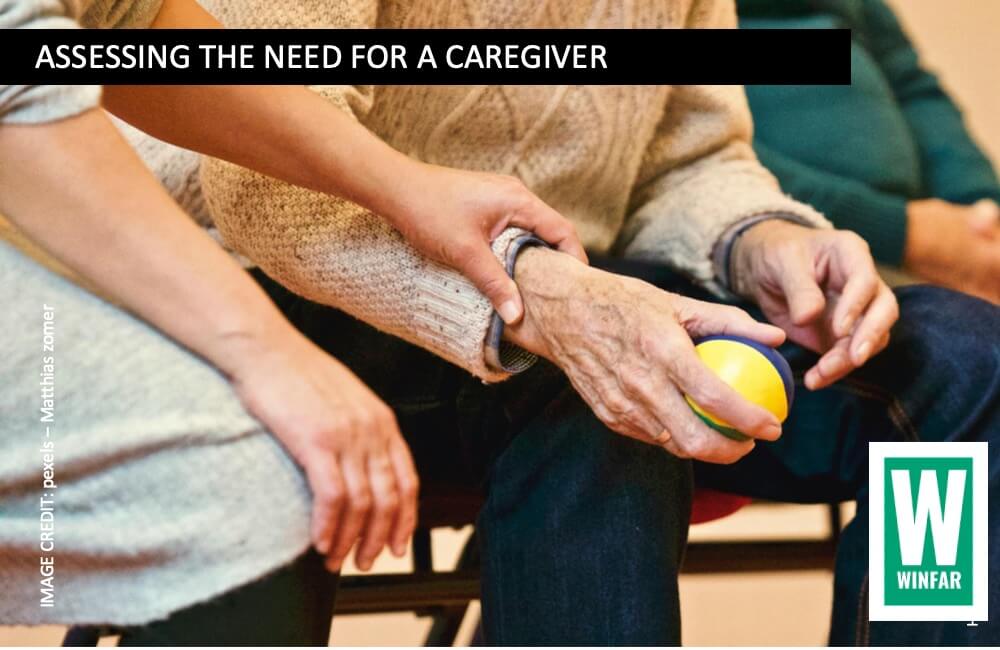Senior care assessment South Africa: Sometimes an older adult’s need for additional help is obvious. It could be that he or she is having a hard time getting to appointments, seems confused by instructions, or perhaps isn’t paying bills on time. More often than not, though, the change happens gradually. That’s where an assessment comes in.
A comprehensive review of all aspects of person’s mental, physical and environmental condition is one way to determine if your loved one needs assistance. The below is a starting point, to enable you to take a step back, evaluate ability, identify risks – and recommended ways to reduce the risk, to help your older adult remain safely independent for longer.
The goal is to pick up clues early, before they start to impact day-to-day life, so we can do something about them. Below are a few red flags to look out for:
Mobility
Each year, more than 1 in 4 older adults will have a fall. To make sure your loved one isn’t part of that statistic, it’s important to evaluate their living space from a safety perspective.
What to do: Walk through the house with your loved one and assess every room.
Are there handrails on one or both sides of stairs, grab bars for getting in or out of the shower? Is the passage way well-lit, or is there easily accessible lighting on route to the bathroom? Are there are a lot of loose mats on the floor, that are easy to trip over in the dark?[Read: Make Your home safer] In the kitchen, is everything within easy reach? [Read: Is your kitchen safe?] Think in terms of precautionary measures, even if they are not needed yet, they may be necessary tomorrow.
Pay particularly close attention to how well your loved one is getting around. Watch them walk across a room and take note of their gait speed and the movement of their feet. Are they shuffling or dragging them? How far apart are their feet when walking?
When someone spreads their feet far apart, that tends to indicate difficulty in balance. Other signs that may indicate strength or balance issues are difficulty rising from a chair, using furniture or a wall for support when walking, and difficulty pivoting. [Read: 5 warning signs of pending mobility issues in seniors]
What to do: When it comes to mobility, admitting you need help can be scary. But the fact is sometimes we all need a helping hand! And Mobility aids are there to preserve independence, not take it away. So, encourage your older adult to be honest with themselves, and with you. If walking has become stressful, and anxiety inducing, if they have difficulty balancing or tire quickly, perhaps it is time to consider a little assistance. [Read: Here is how to choose the best walking aid for you.]
Driving
By 2030, there will be more than 70 million people age 65 and older. About 85 percent will be licensed to drive. In fact, seniors are outliving their ability to drive safely by an average of seven to 10 years, according to AAA. Multiple accidents or a number of tickets means it’s time to have a talk. Signs of trouble in the driving department could include subtle indicators, like scratches or dings on the car, particularly if your loved one can’t remember how they got there.
What to do: Tag along for a ride and keep your eyes peeled. Is your loved one having close calls or getting lost on very familiar roads? Or Does there appear to be a cognitive problem or vision difficulties? In which case it may be time for a medical evaluation. Poor vision may be easily fixed with a new pair of prescription glasses.
If it is time to hang up the keys, look for other transportation options to help your loved one get around and maintain their independence — from Uber to senior shuttles in their town, there are a multitude of safe options available.
Changes in appearance
Has your loved one’s appearance changed? Have they gained or lost a significant amount of weight? Have they not shaved in a while? Has their behaviour changed: If your mother was always meticulous about her appearance but is suddenly wearing the same clothes every day or not cutting her nails, these could be signs of cognitive issues or depression. Or, you may find that changes in mobility — say, a fear of getting in and out of the bathtub or showering — are hindering their ability to care for themselves.
What to do: These changes may have multiple causes, so go on a fact-finding mission. If mobility issues are the issue, it’s time to consider a few safety measure like grab bars, a shower seat or raised toilet seat. [Read: Bathroom safety checklist for seniors]
Medication
Medication is a double-edged sword. This is especially true when it comes to seniors — many of whom may be taking five or more pills on any given day, many of which are medically necessary. How those pills interact with each other and the potential side effects are where things get unpredictable.
What to do: Look at your loved one’s pill bottles to be sure medication is being taken as directed and are being refilled. Set up a pill organizer and keep a list of all medications taken — that includes over-the-counter products, herbal supplements and vitamins — with frequency and dosage.
If you or they are noticing troubling symptoms, such as fatigue, depression, loss of appetite or frequent headaches, ask a doctor or pharmacist if a medication or combination of drugs could be the cause. A pharmacist can review all of your loved one’s prescriptions, not just those prescribed by a specific doctor. [Read: Which medications increase your fall risk]
The next step
If you are noticing more than a few red flags from the list above, It may be time to chat.
The best person to go to initially is the primary care physician, who knows your loved one’s history. If necessary your doctor can even arrange an inhome visit to evaluate the situation, recommend changes and get help.
Remember: This isn’t about losing independence, this is about being proactive and trying to preserve independence, so its very important to discuss everything with your loved one before taking any decisions.
The above article is an extracted from ‘Assessing the need for a caregiver‘ We highly recommend you read the full article here: https://www.aarp.org/caregiving/home-care/info-2021/assessing-need-for-caregiver.html

